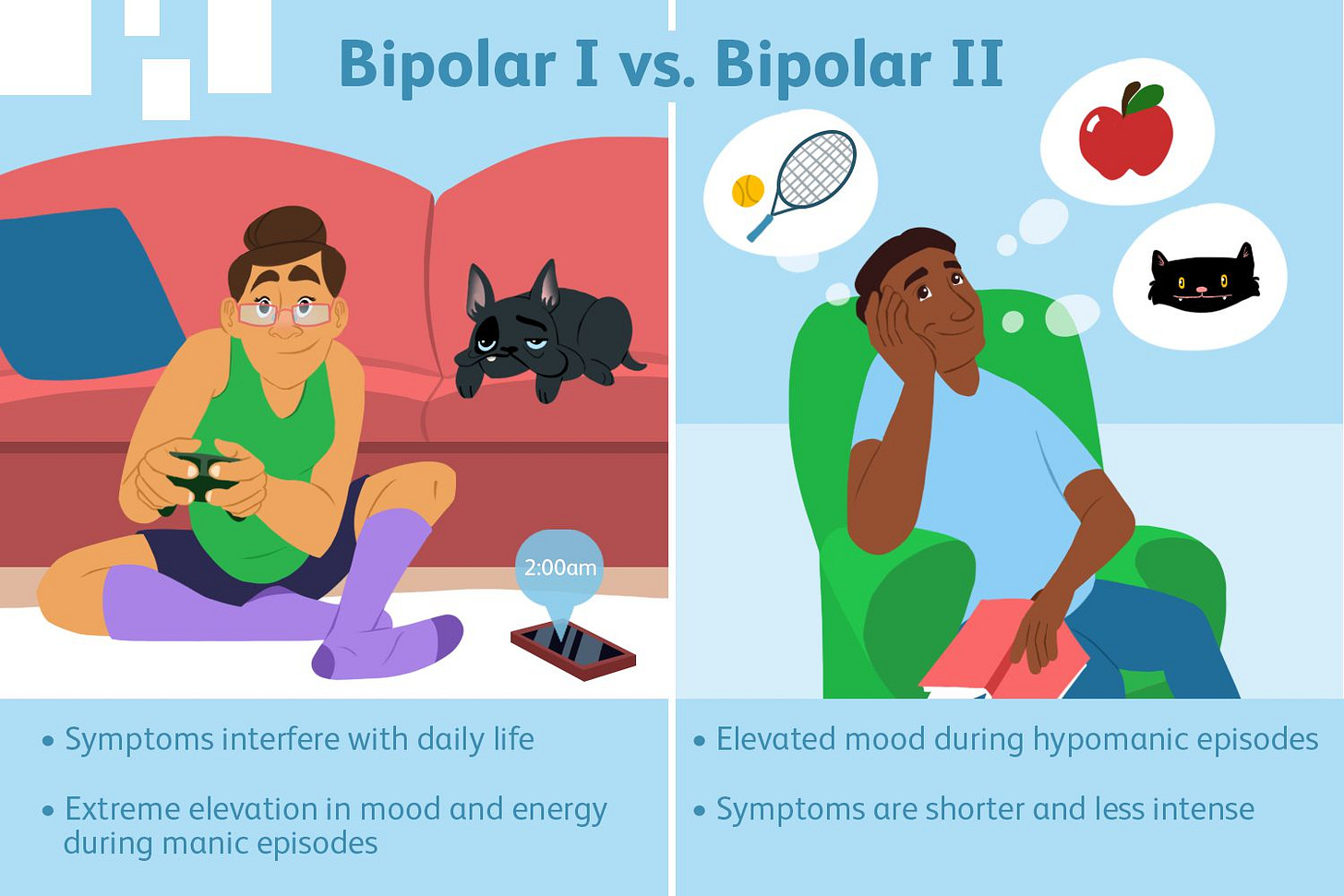Bipolar Type 1 vs. Bipolar Type 2
Written by Crystal Ruizmun
There is a huge misconception about what Bipolar is. Many use the term very loosely, using it as a way to describe mood swings. Such phrases as “the weather is so bipolar” or, “she’s so bipolar”– usually refer to someone who changes their mind or mood rather often. In reality, that is not what bipolar is.
Bipolar consists of highs and lows, not implicating going from being super happy to being angry in a switch. Bipolar “highs” include euphoric states, consisting of manic episodes where the person can be extremely productive and get little to no sleep because of the mania. The “lows” are depressive episodes, lasting from days to months on end and potentially years, in most extreme cases.
Bipolar Type 1 is considered “manic-depressive”. It is where there are extreme cases of mania where the person is “rapid”, having intense hyperactivity and energy, to the point it is euphoric. Some of the symptoms may include impulsivity, hypersexuality, substance abuse, etc. These can be potentially dangerous, making the person put themselves in possibly dangerous situations. Because of this mania, little sleep is desired or needed and can last up to a few months. Afterward, a depressive episode is followed, but sometimes they may not appear for a few months.
Bipolar Type 2 is considered “depressive”. It is where the person undergoes months of a depressive episode, making it difficult to do simple, daily tasks. It is essentially clinical depression that may last for months to where when they come out of their episode, they have “hypomania”. It is different from mania and bipolar type 1 in general, because hypomania is more intense than regular mania, making the person feel “powerful” and possibly above others– making them lose sleep as well.
The main difference between Bipolar Type 1 and 2 is the hypomania, how long the episodes last, and how intense they are. Bipolar Type 1 is heavier on the episodes of mania as they last longer than their depressive episodes which the medication needed for it is to calm them down. Bipolar Type 2 is heavier on the episodes of depression as they are longer. Still, they receive hypomanic episodes, making them feel “invincible” to where they eventually “crash” into their depressive episodes that may last for months.
As someone who experiences Bipolar Type 2 symptoms, it is extremely important to know the difference between the two types and to understand how using phrases like, “the weather is so bipolar” harms the view of people who do suffer from bipolar. It does infringe on their daily lives which can make it difficult to do simple, everyday tasks. Learning the difference and truly knowing what bipolar is are the next steps to removing the stigma of what bipolar is and mental illness as a whole.
References
Bipolar disorder - Symptoms and causes - Mayo Clinic
Bipolar Disorder - National Institute of Mental Health (NIMH) (nih.gov)
Bipolar I Disorder Symptoms, Treatments, Causes, and More (webmd.com) Bipolar Type 2 Symptoms (verywellhealth.com)


